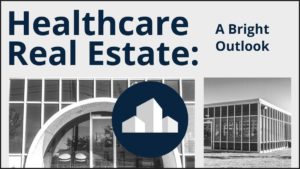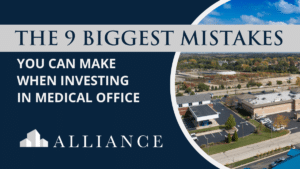How the Pandemic Has Changed the Senior Housing Business
What Issues Did Senior Housing Face Prior to the Pandemic?
The senior housing industry was already facing several changes ahead of the COVID-19 pandemic. Some of these challenges would go on to become even more pronounced as a result of the pandemic. The primary challenges facing the senior housing industry pre-pandemic included:
- Staffing Challenges: According to a 2018 survey of more than 600 high-ranking senior housing professionals, the greatest challenge facing the industry pre-pandemic concerned staffing. Nearly half of all respondents cited staffing challenges as their top concern.
One-third of survey respondents said they anticipated increasing their recruiting budgets to fill key positions, and more than 50% of survey respondents said they intended to increase their training and continuing education budgets as a way of demonstrating their long-term commitment to employees.
- Lackluster Facilities and Infrastructure: Many senior housing facilities were built in the 1980s and early 1990s, and these facilities are not becoming outdated. In 2018, nearly half of senior housing operators surveyed indicated that they planned to invest in facility renovations or refurbishment to remain competitive in the wake of new senior housing development. More than half said that they planned to invest in technology more heavily, such as WiFi, electronic health records and IT infrastructure.
- Constrained Service Delivery: Another challenge faced by the senior housing industry pre-pandemic is that America’s aging individuals tend to be highly dispersed. They are more likely to live in rural and suburban locations than urban city centers, which has made it difficult for senior living operators to provide services and transportation that would otherwise make it easier for seniors to comfortably age in place.
- Lack of Affordable Senior Housing: Developers need public resources to subsidize affordable housing development and operations, otherwise deals don’t pencil out. However, for many years, Congress paused funding for the Department of Housing and Urban Development (HUD) Section 202 program, which was a critical source of affordable housing dollars.
This left senior housing developers competing for low-income housing tax credits (LIHTC), credits that are available to all low-income housing developers regardless of which demographic they intend to serve. Competition for LIHTC credits is fierce. Absent greater subsidies, there was a slowdown in affordable senior housing development nationally.
Moreover, as wealth gaps continue to grow, seniors in the lower-income brackets have found it difficult to access affordable senior housing. Meanwhile, middle-income seniors often have too much income to qualify for subsidies but too little income to move into market-rate housing – a challenge to which the industry struggles to respond.
Subscribe to our commercial real estate newsletter.
How Did Senior Housing Struggle During the Pandemic?
Among all real estate asset classes, senior housing was among the hardest hit by the pandemic. As noted above, occupancy rates plummeted during the pandemic. Unlike other recessions, like the Great Recession, that were brought on by financial and economic issues, the pandemic was a black swan event caused by a health crisis.
Being a health crisis, one that disproportionately impacted the elderly, it should come as no surprise that the senior housing industry struggled. Here are some of the primary reasons for the decline in occupancy during the pandemic:
- Lack of Information: In the early stages of the pandemic, very little was known about COVID-19 – including how it spread, whom it impacted, and to what degree people could be affected. As outbreaks became more pronounced in senior living facilities (many of which made local, if not regional and national news), senior housing facilities struggled to respond.
They simply did not have accurate information about the virus or how to respond to these outbreaks – a situation that was compounded by a shortage of PPE that may have otherwise protected staff and residents.
- Fragile Immune Systems of the Elderly: Elderly adults inherently have weakened immune systems. Many senior housing residents also have co-morbidities that made them more susceptible to catching and falling victim to COVID-19. As it became more apparent that the elderly were the most likely to die from COVID, some facilities had no choice but to lock down facilities entirely.
- Residents and Staff in Close Proximity: Senior living facilities put residents in close proximity, to each other and to staff. This is especially true at assisted living and nursing care facilities where patients need critical daily care.
However, unlike a situation in which a senior lives with an adult child who cares for them, the staff at senior living facilities had no choice but to enter and exit the facility each day.
They do not live on-site, and therefore, every time staff re-entered the building, they increased the risk of bringing the virus with them (often unknowingly) and passing the virus to already susceptible elderly residents. As we now know, individuals can be asymptomatic for several days, making it all the easier for the virus to spread in senior living facilities.
- Low Morale: Senior living facilities had to abruptly shift and implement new protocols, ranging from the use of PPE (when available) to limiting visitors altogether. Despite these efforts, many residents were still getting sick and dying at senior living properties. This combination of factors caused morale to plummet.
Many families decided to take their loved ones out of senior living facilities as a precaution, and others, who may have otherwise considered placing a family member in a senior living facility, held back on doing so given health concerns and/or the fear of not being able to see one another – perhaps for extended periods of time.
Morale was so low during parts of the pandemic (particularly around the holidays, when another wave of cases plagued the nation pre-vaccine rollout) that many staff members decided to quit their jobs entirely.
- Haphazard Vaccine Rollout: There was renewed hope once vaccines became available, however, vaccine rollout occurred haphazardly at some facilities. There was no rhyme or reason behind why some facilities had access to the vaccine before others. This frustrated residents, staff, and their families alike.
Related: Is Inflation on the Horizon?
What Challenges Does Senior Housing Face Now?
The senior housing industry has begun to stabilize, but it is not out of the woods altogether. The vaccine has certainly helped to contain the virus. According to a survey of senior housing operators, an estimated 95% of senior housing residents are now fully vaccinated. As the number of COVID cases continues to decline, more people are starting to show interest in senior housing. Occupancy rates are correspondingly on the rise.
However, there are some system issues that will still need to be addressed in order for senior housing to thrive in the months and years to come. The challenges facing the senior housing industry today include:
- Labor Shortages: Staffing was a challenge pre-pandemic, but it has become more pronounced as a result of COVID-19. Facilities are finding it difficult to attract and retain staff. These are hard jobs that often do not pay much more than minimum wage.
Staff is also placing a greater emphasis on their work environment.
This is causing operators to rethink staffing protocols. For example, during the pandemic, many facilities started having staff and residents assigned to “pods” or “cohorts” to reduce the likelihood of the virus spreading. This allowed individual staff members to work with fewer residents at a time.
Their “caseload” often dropped from 20+ residents to less than 10 residents at a time, a change that staff report to appreciate and say has allowed them to create more intimate bonds with the residents in their respective cohort. This change is likely to last well beyond the pandemic, given the positive impact it has had on staff and residents alike.
That said, staffing will continue to be a challenge for the foreseeable future. The unemployment rate is still high compared to pre-pandemic. Operators are having regular conversations about how to attract and retain workers, including how to build careers out of these entry-level jobs.
For example, some operators have partnered with Boston University, which launched a program in Fall 2021 aimed at staffing senior housing facilities given that it is otherwise a growth industry. Until facilities full staff up, many will be forced to rely on temp or agency workers, which are more costly and can increase an operator’s expenses.
- Ongoing Vaccination Efforts: Although most senior housing residents are now fully vaccinated, operators report that the vaccination rate among staff remains closer to 50%. Staff tends to be young, largely female, and often lower income.
Many continue to have concerns about the vaccine, including its impact on a woman’s ability to have children (a myth that has been debunked yet remains pervasive). Given that the mortality rate among otherwise young and healthy individuals is so low, many staff are foregoing the vaccine altogether. Having a fully-vaccinated staff is important to residents and their families, and will be critical to an operator’s recruitment efforts.
Meanwhile, most residents who have been fully vaccinated are starting to become eligible for vaccine booster shots. It will be imperative to re-vaccinate seniors as the efficacy of their initial vaccine dwindles with time.
- Desire for Intergenerational Living: The pandemic has placed a greater emphasis on the benefits of intergenerational living. Many families pulled their elderly parents from senior living facilities and embraced having them at home.
Moreover, many Baby Boomers had their adult children move home. Many Baby Boomers became babysitters for their grandchildren as daycares shut down. During a time when so many were otherwise isolated, these families benefitted from greater socialization than their peers.
The desire for intergenerational living is expected to increase in the years to come, especially as Baby Boomers begin to age into the senior housing demographic. Most senior living facilities are freestanding properties that cannot otherwise accommodate intergenerational living.
There will be growing demand for senior housing located in mixed-use properties or in close proximity (walking distance) to more traditional market-rate housing where intergenerational families can remain together.
- Sustainability Concerns: Baby Boomers will overwhelmingly represent the next generation of those living in senior housing facilities, and this demographic is far more educated about the impacts of climate change and need for more sustainable housing development.
This will force existing senior housing facilities to adapt and retrofit their properties to become more eco-friendly and energy efficient – upgrades that will be costly but will be necessary for operators looking to compete with newly constructed senior housing facilities where sustainability features are now standard
Related: Vaccine Investments Will Have Significant ROI for America
What is the Outlook for Senior Housing?
The outlook for senior housing is significantly more positive than it was just a year ago. Most operators found their lenders and equity providers to be highly cooperative during the pandemic, adopting a “we’re all in this together” approach that has worked to the benefit of all. This prevented extreme distress.
Many lenders modified loans or gave forbearance to some degree, so operators did not default as many once feared. Most operators appear to be through the worst of their vacancy issues and are now on the upswing as facilities begin to stabilize.
Investors are taking note. Pension funds, in particular, are looking at senior housing as a way of diversifying their holdings (real estate holdings or otherwise). Senior housing operates differently than office, hotel, or retail properties.
When typical economic or financial recessions hit, these other product types tend to suffer. However, senior housing is a needs-based industry and is not as impacted by economic swings. The pandemic was a unique situation given that it was a health crisis, one unlike the nation has ever seen before.
An uptick in transaction volume supports this. Sales on senior housing halted during the pandemic. Anyone who sold did so out of necessity, knowing they would not be getting top dollar since everyone was spooked by COVID’s impact on the sector.
Now, there is pent-up capital looking to take advantage of the opportunities sellers are finally bringing to market as the industry improves. Investors realize the tailwinds that make senior housing a compelling long-term buy and are jumping at opportunities as they become available.
Conclusion
Despite the challenges senior housing faced during the pandemic, two things are certain: One, demand for medical services provided in nearby office buildings never declined and, indeed, likely increased. And two, considerable institutional capital seeking yield during these low yield times are becoming increasingly attracted to not just senior housing, but to healthcare real estate in general.
This speaks well for medical office buildings as the trend for institutional interest in acquiring doctors’ practices increases demand for their real estate, while reducing the risk profile.
Furthermore, while senior housing is still overwhelmingly occupied by the “silent generation” (those born in the 1930s), the baby boomers are on the verge of wanting and needing not only senior housing but healthcare of all kinds which continues to increase demand.
This makes all healthcare real estate particularly attractive for investment as a stable asset class that sits directly in the path of growth driven by the aging population and increased interest from deep pocketed capital sources.
If you are ready to invest in medical office buildings and capitalize on the opportunity to participate in an asset class that we know to be on the unwavering path of growth over the next two decades, then contact us to learn more about our platform and investing with us.
Are you looking to learn more about Alliance? Check out our Team Page today!
POSTED BY
Ben Reinberg
Founder & CEO | Alliance Group Companies

Ben Reinberg is Alliance Group Companies' founder and CEO.
Since 1995, Alliance Consolidated Group has acquired and invested in medical properties with net leases between $3 and $25 million across the United States. With decades of commercial real estate experience, we take pride in committing to meeting the goals of our Sellers, as we consistently and seamlessly adhere to successful closings.



